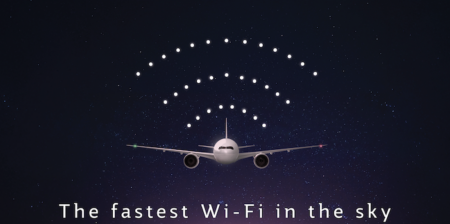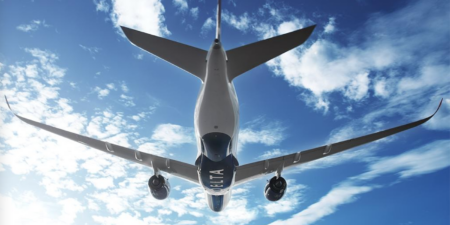2015 looks set to be the most exciting year in the nine-year history of the Crystal Cabin Awards. Following the submission of a record 68 qualifying entries for this year’s event, initial voting by the 24-strong jury has narrowed them down to a shortlist of 21 finalists. A lot of excitement usually surrounds the reveal of the shortlist, but this year is particularly interesting as it has close rivals in the aviation and airline sector vying for the internationally coveted prizes.
For example, in the ‘Premium Class & VIP’ category, the A380 cabins from Etihad and Qatar Airways are battling it out head-to-head, while in the ‘Industrial Design & Visionary Concepts’ category two aircraft manufacturers – Boeing and Embraer – are also in competition. Meanwhile the ‘Passenger Comfort Systems’ category has three technical concepts relating to connectivity in the running, with Recaro, Lufthansa Systems and ViaSat battling it out.
Let’s take a closer look at the shortlist…
Industrial Design and Visionary Concepts
Boeing is in the running with its newly developed Premium Arch, a spacious entry area for the B777 cabin which incorporates a gentle lighting concept (shown left). The Premium Arch is being judged against some stiff competition though. The first contender is Embraer, which entered its E2 regional jet cabin design, which combines captivating innovative design with well-thought-out use of space, and ease of maintenance.
Panasonic Avionics also made it into the final with its Jazz seating concept for long-haul economy. What makes Jazz special is that the seat has been developed around the possibilities of in-flight entertainment from the very beginning, instead of integrating it into the finished seat design.
Premium Class & VIP
The judging panel’s selection of finalists in this category has really created some rivalry though: not just two airlines, but two neighboring airlines. Two direct competitors – Etihad Airways (shown below right) and Qatar Airways (pictured left)– are both represented with their first class cabin concepts for the Airbus A380.
The two Gulf carriers launched the flagship aircraft in 2014, but with different concepts – both high quality, but with different approaches to privacy. It will be interesting to see how this category plays out in final voting. The trio of finalists in this class is completed by Lufthansa Technik. The Hamburg-based company submitted an innovative modular VIP seat concept that brings the comfort of a living room winged chair to the skies – including a fold-out champagne glass holder, of course.
Passenger Comfort Systems
Far more airline passengers are likely to encounter one of the finalists from this category, which is dominated this year by the theme of connectivity. The CL3710 economy class seat from Recaro (left) includes an integrated 13.3in flatscreen IFE display to provide in-seat cinema entertainment, and even has a port for connecting a passenger’s own electrical device to the on-board system.
The growing smartphone and tablet market also inspired the second German finalist in the category – Lufthansa Systems – to develop the BoardConnect in-seat solution. Instead of installing cables and monitors in every seat on the aircraft, the company’s solution is simply to attach a tablet into the backrests (see right) and connect them with the on-board entertainment system via wi-fi. On the subject of wi-fi, the third finalist in the category – ViaSat – is bringing bandwidth to the skies with its satellite-based Fly-Fi product. Specifically, this means 12Mbps at each seat, sufficient to stream movies above the clouds.
Passenger Comfort Hardware
The ‘bring your own device’ concept is also evident in this category. US-based company Smart Tray made it into the finals with a simple design that effectively adds a tablet holder to the seatback tray table (see left).
Boeing meanwhile has modified the Space Bin overhead stowages that won it second space in the 2014 Crystal Cabin Awards so that cabin baggage can be stowed vertically (pictured right). The result is almost 40% more room for cabin baggage, using the same amount of cabin space. The final contender in this category is the SANTO concept (Special Accommodation Needs for Toddlers and Overweight Passengers), by which where the fuselage narrows at the rear of the aircraft, a special wide seat is installed, making use of normally wasted space. This seat can then be assigned to overweight passengers or divided and assigned to passengers with small children.
Material & Components
Efficient solutions also characterize this category. Dresden’s Fraunhofer Institute made it into the final with a new concept for dropping oxygen masks: Smart Fluox achieves an across-the-board increase in efficiency of 80-90% compared to conventional electromagnetic mechanisms. Reliant Worldwide Plastics from the US reached the final three with a thermoplastic carbon backrest. SABIC also made it into the final with a plastic solution, the Lexan XHR2000 transparent sheeting product (shown left) with application possibilities ranging from windows to surface elements within the cabin.
Greener Cabin, Health, Safety & Environment
This environmentally aware category has established itself as an important part of the Awards. Amongst the finalists is New Zealand company Phitek with its Economy Headphones (left). Headphones are one of the most stressed in-flight products, and these have a product claimed to be life ten-times that of conventional models.
Meanwhile the Humidity in Balance drying system from CTT Systems is designed to prevent condensation of cabin air as it encounters the cold fuselage structure, meaning that the cabin itself doesn’t dry out so much and the weight increase and stress on the fuselage structure resulting from accumulated condensation are avoided. The third concept in this category is B/E Aerospace’s Solar Eclipse concept (right), which involves the insertion of a thin solar cell foil into the window blind, enabling the passenger to recharge electronic devices during flight. The system is still under development, but the manufacturer is confident about gaining FAA approval.
Universities
This seventh and final category provides some interesting ideas, with the three finalists this year coming from Germany, the Netherlands, and the USA. Alexandra Moceri from the College for Creative Studies in Detroit convinced the judging panel with Escape, a visor mounted in an economy seatback which can slide over the passenger’s head to provide immersive IFE. Next up, a team from TU Delft in the Netherlands submitted the Enable concept, which uses the surface of the folding table as an interactive display (pictured above). Finally, Marc Spille from the Hamburg University of Applied Sciences (HAW Hamburg) – who collected the Hamburg Aviation Young Talent Award at the end of 2014 – is in the running with his mobile vacuum trash container design which uses the vacuum technology of the on-board toilet to compact the rubbish bags in the galley to a space-saving format in seconds. His idea was developed in collaboration with Airbus.
The official announcement and prize giving ceremony will take place at a formal dinner on April 14. All of the finalists’ products and concepts will then be presented in the Crystal Cabin Award Gallery (Hall B6, Booth 6C10) at Aircraft Interiors Expo in Hamburg on April 15 and 16). On April 15 at 11am, the winners will also be at the Gallery to personally present their concepts to the public.




